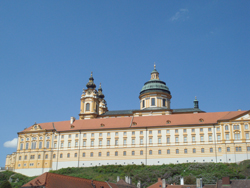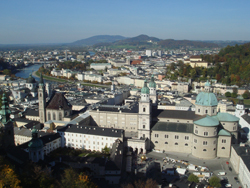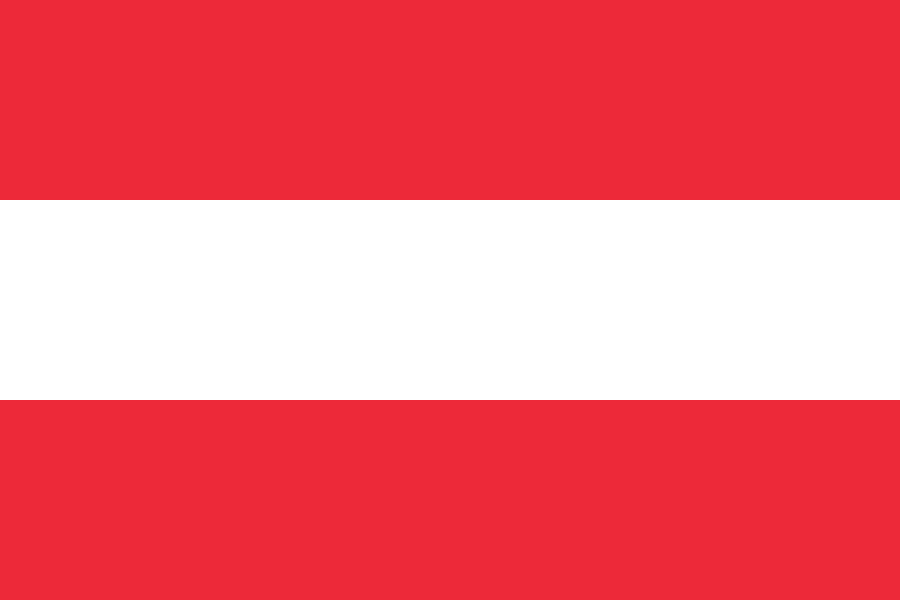The Austrian capital, one time Imperial capital and residence of the Habsburg dynasty, is one of the most historical cities in Europe. I've briefly outlined a small selection of things I've enjoyed doing in Vienna - although I'm quite sure there's more.
-
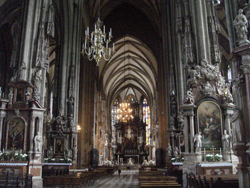 St
Stephans - the Vienesse Cathedral of St Stephans,
predominantly in the Gothic-style of architecture,
is a landmark of the old town of Vienna and an architecturally
gem. The third church to be build on this location,
the second tower was never completed. The masterpiece
pulpit Gothic features "Fensterguncker" -
a man peering out of a window - who is thought to be
pulpits mason. Visit the catacombs which contain the
entrails of the Habsburg monarchs.
St
Stephans - the Vienesse Cathedral of St Stephans,
predominantly in the Gothic-style of architecture,
is a landmark of the old town of Vienna and an architecturally
gem. The third church to be build on this location,
the second tower was never completed. The masterpiece
pulpit Gothic features "Fensterguncker" -
a man peering out of a window - who is thought to be
pulpits mason. Visit the catacombs which contain the
entrails of the Habsburg monarchs. -
Mariahilfer Straβe - Mariahilfer Straβe is the central shopping street of Vienna with all the usual major brands.
-
Hofburg - The Hofburg Imperial Palace complex once served as the
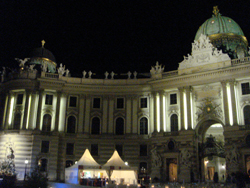 Winter Palace for the ruling Habsburg Dynasty while Schönbrunn
was their prefered summer residence. The Hofburg lacks
any central location having been built had developed
over many centuries and a large portion is now the official
residence of the Austrian President. The Hofburg Palace
is home to the Spanish Riding Schools and tours of the
Imperial Rooms are available.
Winter Palace for the ruling Habsburg Dynasty while Schönbrunn
was their prefered summer residence. The Hofburg lacks
any central location having been built had developed
over many centuries and a large portion is now the official
residence of the Austrian President. The Hofburg Palace
is home to the Spanish Riding Schools and tours of the
Imperial Rooms are available. -
Spanish Riding School - Contained in the Hofburg Palace, the Spanish Riding School remains the only school to teach riding in the Renaissance style. The School is famed for its training of the Lipizzaner which dates from the 16th Century and was developed with extensive support of the Habsburg dynasty.
-
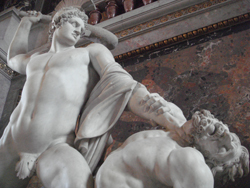 Art
History Gallery - One the benefits of Empire
is the ability to build a large collection of art
work by renowned artists. Vienna is no exception.
Works by Titian, Tintoretto, Rubens, Van Dyck and
Carravaggio, Cranach and Dürer make up some
of the notables in the picture gallery. Also of note
are the Collection
of Greek and Roman Antiquities and Egyptian
and Near Eastern Collection
Art
History Gallery - One the benefits of Empire
is the ability to build a large collection of art
work by renowned artists. Vienna is no exception.
Works by Titian, Tintoretto, Rubens, Van Dyck and
Carravaggio, Cranach and Dürer make up some
of the notables in the picture gallery. Also of note
are the Collection
of Greek and Roman Antiquities and Egyptian
and Near Eastern Collection -
Schönbrunn - the Schönbrunn Palace, the favoured summer palace of the Habsburg dynasty, is a masterpiece of Baroque style architecture. Much loved and sculpted by Marie-Therese, the cohesive nature of the Palace, gardens and Gloriette and the associated museums are all worth spending a day.
-
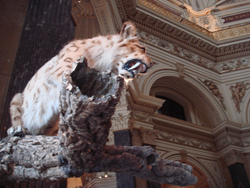 Natural
History Museum - The Natural History Museum,
like the Art
History Museum, is a notable building from an
architectural perspective. The contents are no less
impressive and include an impressive collection of
gemstones as well as rare fossils and skeletons.
Natural
History Museum - The Natural History Museum,
like the Art
History Museum, is a notable building from an
architectural perspective. The contents are no less
impressive and include an impressive collection of
gemstones as well as rare fossils and skeletons. -
Schloss Belvedere - The Schloss Belvedere, another palace conversion to gallery, boasts one of the most impressive collections of Austrian arts from the medieval period to the present day with a very strong modern section.
-
Imperial Burial Vault - underneath the Capuchin Church in the Viennese Old Town is the Imperial Burial Vault - containing the sarcophogi of the Habsburg dynastry. As burial coffins go these are, without a shadow of a doubt, some the largest and most impressive you're ever likely to see contained within another building.
-
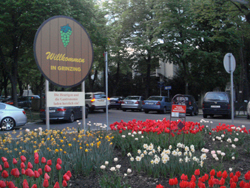 Heuriger -
Vienna is well known for it's numerous Heuriger - especially
in the suburb of Grinzing -
which are obliged to served their own wine. Heuriger
wines are either "New" - from the most recent
harvest - or "Old" - from the previous harvest.
A selection of foods may be available. A convivial affair
the Grinzing Heuriger can be touristic - so its probably
worth checking out Neuwaldegg and Nussdorf as
well.
Heuriger -
Vienna is well known for it's numerous Heuriger - especially
in the suburb of Grinzing -
which are obliged to served their own wine. Heuriger
wines are either "New" - from the most recent
harvest - or "Old" - from the previous harvest.
A selection of foods may be available. A convivial affair
the Grinzing Heuriger can be touristic - so its probably
worth checking out Neuwaldegg and Nussdorf as
well.
